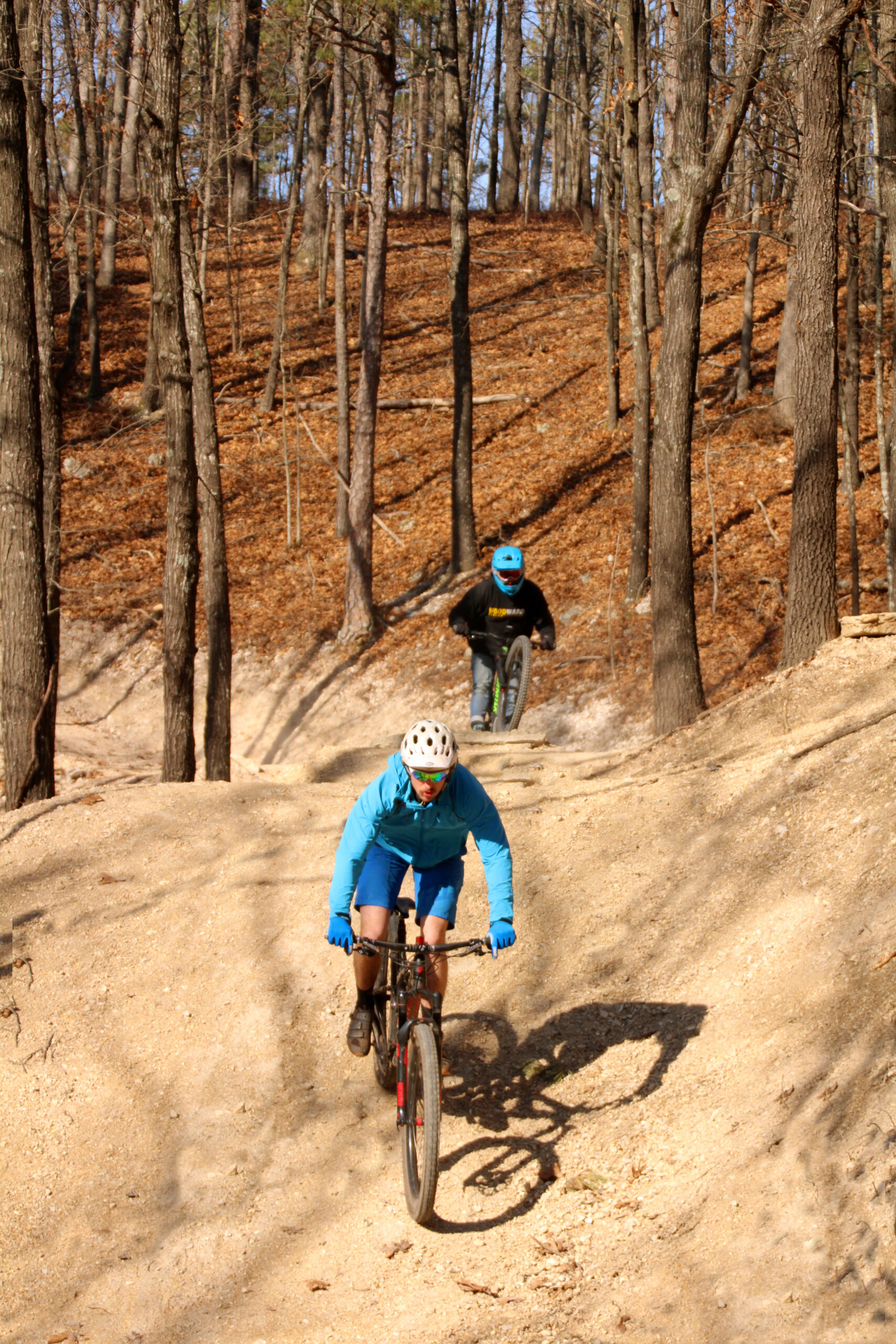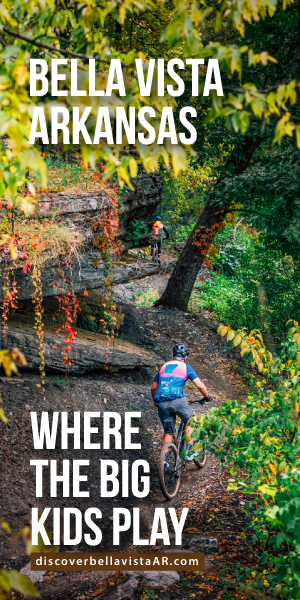If an Arkansan says, “Go take a hike,” it’s all in good humor. After all, seemingly wherever you go in The Natural State, communities large and small are installing new trails or enhancing existing ones. Arkansas is certainly on the go—to the outside—while reaping economic and quality of life benefits along the way.
Even Gov. Asa Hutchinson waxes eloquent about treks along the Arkansas River near Paris and with his kids along the Ozark Highlands Trail.
“I won’t try to name the best; usually my favorite trail is the one I’m hiking at the moment,” Hutchinson said. “People come from across the world to experience Arkansas, which is a great benefit to our economy. In 2018 alone, Arkansas hosted more than 30 million visitors, many of whom specifically came for our state’s outdoor attractions.”
No matter the usage, source after source indicates trails equal tourism dollars. The Arkansas Department of Parks and Tourism uses figures from the U.S. Travel Association to estimate tourism’s overall economic impact in the state. Using this assessment and a study by Longwoods International, it is estimated 3.2 percent of the 29.2 million person-trips to Arkansas in 2016 included bicycling, totaling $246.5 million in cycling-related trip expenditures that year.
Additionally, the Outdoor Association Foundation found “jogging and trail running remain the most popular activities among Americans when measured by both number of participants and by number of total annual outings.” And as National Park Service statistics indicate, outdoor recreation and leisure expenditures overall account for a large portion of visitor spending.
Given this, numerous communities have eagerly taken up the cause of creating or enhancing pathways to take advantage of ever-expanding tourism expenditures.
“Trails are important for health and quality of life for residents of a community,” emphasized Arkansas Tourism’s Brandy Flowers. She said visitors are more likely to return to areas where they feel residents have a high quality of life and are also more likely to spend additional time in areas that seem like a nice place to live.
Among the many Arkansas cities and towns enthusiastically supporting outdoor endeavors are Bentonville, Hot Springs and Eureka Springs. Bentonville has the biking bug, with 30 cycling events set for 2019, including the Innovation Cycles Festival (Sept. 13-15) and the Arkansas Enduro Series (Sept. 20-22).
“In 2016, Bentonville hosted the International Mountain Biking Association World Summit, introducing our city and region as a destination to cycling leaders and advocates from around the world,” said Kalene Griffith, Visit Bentonville president. “A Walton Family Foundation study reported over 57 percent of our single-track riders are from outside our region.
“Because of our continued success, in 2018 we hosted 23 cycling events, which had a direct economic impact of over $1.5 million for our city.”
“With the addition of Phase 1 of the Northwoods Trails with 16 miles currently built, we can already see a positive economic impact in Hot Springs,” said parks and trails director Anthony Whittington. “The trails are already attracting regional mountain bike competitions as well, with the Kodiak Tough Race Series held here in February.”
Whittington said local hotels and businesses are feeding Hot Springs’ burgeoning reputation as a bike-friendly city, making accommodations for riders, such as bike racks, repair stations and storage for overnight guests. The city is also moving swiftly to extend the Hot Springs Creek Greenway Trail, currently with 2.5 miles completed out of the 4.2-mile goal. The newest parcel, called the Utility Service Center Section, was dedicated in November 2018. The paved trail, open to bike and foot traffic, is already set to expand late in 2019.
Through a 1/8-cent sales tax, renewed by voters in 2017, Eureka Springs has dedicated funding for capital improvements and support for recreational and educational programming, said Justin Huss, director of the Eureka Springs Parks and Recreation Commission.
“Lake Leatherwood is over 1,600 acres and along with other local parks and greenspace, the system has over 1,850 acres under its management or roughly 41 percent of the acreage of Eureka Springs,” he said. “This equates to almost an acre of parkland per resident, a number that is nearly unparalleled.”
Huss noted the intertwining of natural surroundings and parkland holds value for residents and tourists alike.
“The approval of [the sales tax] has allowed our park system to repair and build facilities and provided revenue opportunities,” he said. “These improvements have resulted in 2018 revenue that has increased 99 percent from 2015 and our camping and cabin occupancy has increased from 11 percent to just under 30 percent.
“We are currently in the final planning stages of work on the Dairy Hollow Trail inside the city limits. This project will be a partnership with a local private school, Public Works and Parks with support from the local Native Plant Society and the (U.S.D.A.) Forest Service.”
Pathway to success: A Natural State for Trails



